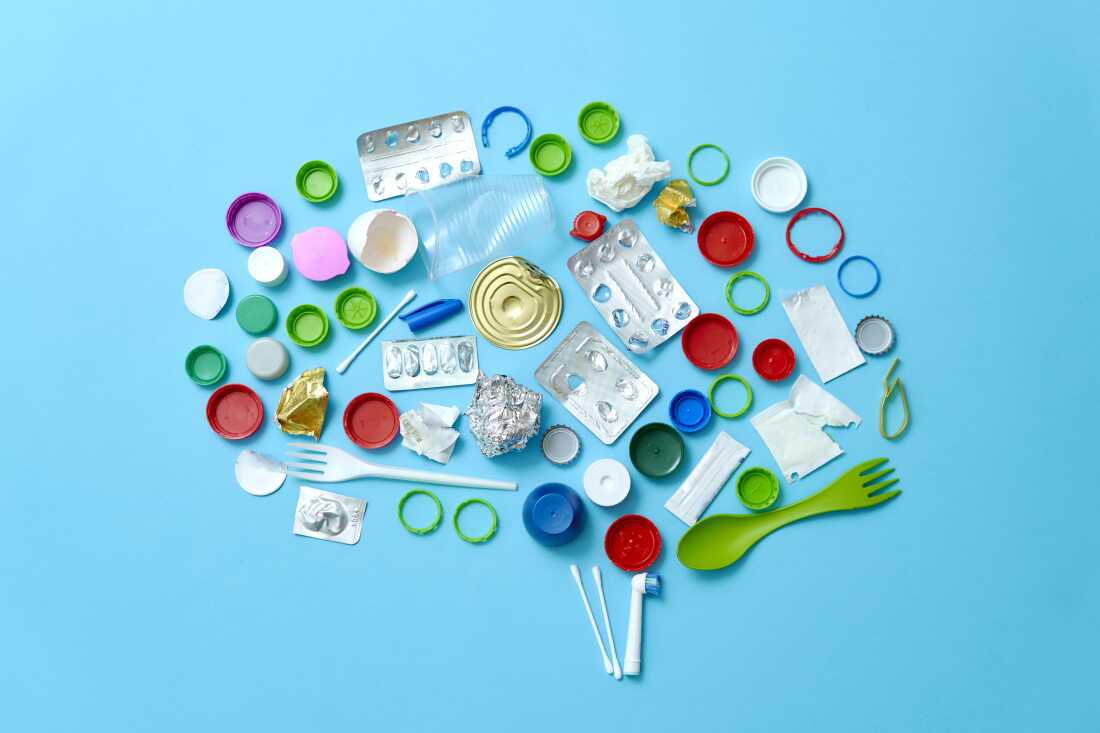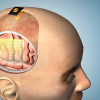
New insights into the brain’s waste disposal system could one day help researchers better understand and prevent many brain disorders.
Andriy Onufriyenko/Getty Images
hide caption
toggle caption
Andriy Onufriyenko/Getty Images
The brain has about 170 billion cells, and when they carry out their usual tasks, they produce waste, largely. To stay healthy, the brain must clear out all this debris. But exactly how this happens remains a mystery.
Today, two teams of scientists published three papers offering a detailed description of the brain’s waste disposal system. Their knowledge could help researchers better understand, treat and perhaps prevent a wide range of brain disorders.
The articles, all published in the journal Nature, suggest that during sleep, slow electrical waves push fluid around cells from deep within the brain toward its surface. There, a sophisticated interface allows the waste in this fluid to be absorbed into the bloodstream, which takes it to the liver and kidneys for elimination from the body.
One of the waste products carried away is amyloid, the substance that forms sticky plaques in the brains of Alzheimer’s patients.

There is growing evidence that in Alzheimer’s disease the brain’s waste disposal system is impaired, says Jeffrey Iliff, who studies neurodegenerative diseases at the University of Washington but was not involved in the new studies.
The new findings should help researchers understand precisely where the problem lies and perhaps solve it, Iliff says.
“If we restore drainage, can we prevent the development of Alzheimer’s disease?” he asks.
A Brief History of Brainwashing
The new studies come more than a decade after Iliff and Dr. Maiken Nedergaard, a Danish scientist, first proposed that clear fluids in and around the brain were part of a system for removing waste .
Scientists named it the glymphatic system, a nod to the body’s lymphatic system, which helps fight infections, maintain fluid levels, and filter waste and abnormal cells.
Both systems work like plumbing in a house, says Jonathan Kipnis of Washington University in St. Louis, author of two of the new papers.
“You have the water lines and the sewer lines,” Kipnis says. “So the water comes in clean, then you wash your hands and the dirty water comes out.”

But the lymphatic system uses a network of thin tubes that carry waste to the bloodstream. The brain lacks these tubes.
So scientists have spent decades trying to answer a fundamental question, Kipnis explains: “How does a waste molecule from the middle of the brain get to the borders of the brain” and ultimately out of the body?
Part of the answer came in 2012 and 2013, when Iliff and Nedergaard began proposing the glymphatic system. They showed that in sleeping animals, cerebrospinal fluid begins to circulate rapidly through the brain, removing waste.
But what was pushing the fluid? And how was waste transported across the barrier that usually separates brain tissue from the bloodstream?
Waves that wash
Kipnis and his team began observing what the brain did while it slept. As part of this effort, they measured the power of a slow electrical wave that appears during deep sleep in animals.
And they realized something: “By measuring the wave, we also measure the flow of interstitial fluid,” the fluid found in the spaces around cells, Kipnis explains.
It turned out that the waves acted as a signal, synchronizing the neurons’ activity and turning them into tiny pumps that push fluid toward the brain’s surface, the team reported in February in the journal Nature.
In a second article published in the same issue of Naturea team led by scientists at the Massachusetts Institute of Technology has provided more evidence that slow electrical waves help eliminate waste.
The team used mice that develop a form of Alzheimer’s. They exposed these mice to bursts of sound and light that occurred 40 times per minute.

The stimulation induced brain waves in the animals that occurred at the same slow frequency.
Tests showed that the waves increased the flow of clean spinal fluid into the brain and the flow of dirty fluid out of the brain. They also showed that the fluid contained amyloid, the substance that accumulates in the brains of Alzheimer’s patients.
In an article published a few weeks earlier, Kipnis had shown how waste products, particularly amyloids, seemed to pass through the protective membrane that usually insulates the brain.
Kipnis and his team focused on a vein that runs through this membrane.
“Around the vein, you have a sleeve that is never completely sealed,” he says. “That’s where the (cerebrospinal fluid) comes out” and transfers waste to the body’s lymphatic system.
From mice to humans
Together, the new studies suggest that keeping the brain’s waste disposal system functioning requires two distinct steps: one to push waste into the spinal fluid that surrounds the brain, and another to move it through the system. lymphatic and eventually outside the body.
“We described them separately,” says Iliff, “but from a biological point of view, they are almost certainly coupled.”
Iliff says many of the new findings in mice have yet to be confirmed in humans.
“The anatomical differences between a rodent and a human,” he says, “they’re pretty substantial.”
But he says the findings are consistent with research into the causes of neurodegenerative diseases like Alzheimer’s.
Researchers know that the brain’s waste disposal system can be impaired by age, injuries and diseases that block the brain’s blood vessels.
“All of these are risk factors for Alzheimer’s disease,” Iliff explains.
Poor waste disposal can also be a factor in Parkinson’s disease, headaches and even depression, says Iliff. So finding ways to help the brain clean itself – perhaps by inducing these slow electrical waves – could prevent a wide range of disorders.